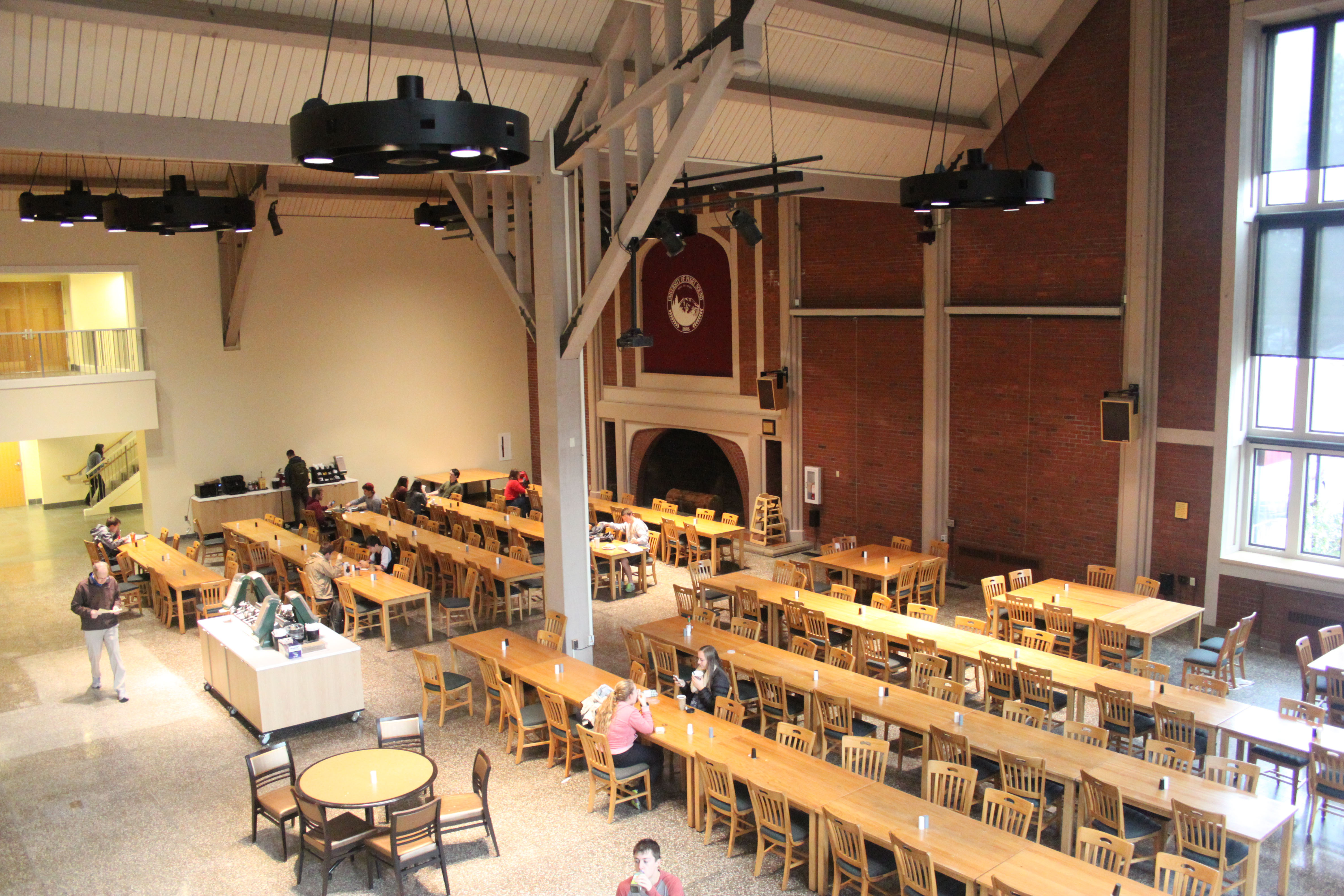
Last semester, I ran out of dining dollars about halfway through the semester. Apparently, I had not accurately calculated how many delicious meals I would be consuming at the S.U.B. I wasn’t too concerned about my lack of dining dollars because I assumed I would be able to purchase more and continue to enjoy some nice raw potatoes everyday (okay, the S.U.B. does have good things sometimes). Upon buying more dining dollars, I saw that I would be receiving $6 in dining dollars for $25 cash.
I thought this seemed a little off but assumed that either they had changed the value of dining dollars or there was a mistake online. I quickly realized after running out of dining dollars two days later with a plate of food in my hand and the cashier staring me down that I was in fact being charged $25 for 6 dining dollars. As my friends began to run out of points, they too realized the price was being jacked way up for people who live off-campus.
Those with an on-campus plan who run out of points and wish to purchase more pay $25 for 25 dining dollars. With this system of payment, a lunch consisting of a sandwich, a bag of chips, apple slices and a drink would cost $17 for an off-campus student who has purchased more points while this same meal would cost $4 for a person with an on-campus plan who has also bought more points.
Following the same logic, the cost of a large pizza from the Cellar would be about $30 as opposed to $6.85. Although I was eager for an explanation of the seemingly absurd price differences, I decided to keep an open mind and contact Dining Services to find out more information.
According to a member of the management staff for Dining and Conference Services, “The way the program is built, with regards to adding additional dining dollars, is to keep the balance between dining dollars and overhead similar among all the meal programs.”
I wondered what exactly these “overhead” costs were and why it seemed like off-campus students were creating more of these costs for the school.
The staff member assured me that “off-campus students do not create more overhead costs than students living on campus. As an off-campus meal plan holder they do contribute a smaller dollar amount towards overhead than students living on campus.”
Although it is true that off-campus meal plan holders are spending less money than on-campus students, they are also purchasing less food and visiting the dining locations less frequently. It seems to me that they are, in fact, contributing the same dollar amount towards overhead in proportion to their use of the S.U.B., Oppenheimer, the Cellar and Diversions.
I was assured through the use of a table that “as an off-campus meal plan holder you will receive more dining dollars and pay less in overhead.” When I did the calculations myself, I found that the percent of the total cost that goes toward overhead is about the same for both plans, provided the student doesn’t exceed the allotted points. But this doesn’t hold up if that same student should run out of points. In fact, in that case the on-campus plan offers nearly five times better value for the same expenditure.
When I asked if this seemed like a fair way to treat off-campus students, I was told, “We are trying to be transparent in what the costs are upfront and to provide tools to best aid students in their decision-making process.”
I found this statement a bit troublesome because I don’t feel that the Dining Services management staff is very forthcoming about the financial blows that result if a student runs out of dining dollars on his or her off-campus plan. In order to find this information, one must scroll halfway down the “Your Meal Plan” page on the school website. If the school is going to continue with this practice, then the information should be stated more explicitly in a clear warning before one purchases a plan.
Say I live off-campus and have purchased an off-campus plan. I have been diligent about making sure I conserve my dining dollars, but I run out with two weeks of school to go. It is reading period and I’ve been at the library all day. I would love a nice cup of coffee to keep me going and a sandwich from the S.U.B., because I don’t have time to go home and make myself dinner.
If I had decided to put more points onto my card, these two items would cost me around $12.50. A hungry person who is not a student at the school wanting these same items would spend around $7 by paying in regular cash. In this situation, a student who is enrolled at Puget Sound and pays tuition is being charged more for food than someone who does not attend the school.
This unfair policy was never adequately explained to me even after a series of confusing calculations meant to justify the arbitrary cost difference. In my opinion, this practice penalizes not only students who live off-campus, but also students from the area who cannot afford to live on campus and pay for an on-campus meal plan.
Punishing its own students for giving less money to the school is something I do not think the University of Puget Sound should continue to do.



